
What you will learn in this article
- My story of getting sick in the pristine mountain house
- How air pollution is defined and measured
- What causes indoor air pollution
- Health conditions linked to indoor air pollution include:
- Autoimmune disease
- Cancer (lung cancer, breast cancer, and others)
- Respiratory diseases
- Cardiovascular disease (including high blood pressure)
- Neurological disease (including an increased risk of Alzheimer’s in children!)
- Type 2 diabetes
- Organ damage (kidneys, liver)
- Birth defects
- Accelerated aging
- Types of air filters on the market
- What to look for in an air filter
- What I picked for my house (Air Doctor)
- Group buy discount for Hormones Balance community
I had no idea that indoor pollution was “a thing.” In fact, I thought it was another “invented” industry to create a market for a product.
Things have changed when I bought a mountain house in the Rocky Mountains, Colorado, just outside of Boulder. One of the reasons I chose to live off the grid: To get access to pristine, clean mountain air.
Sick in the pristine mountain house…
Just 2 weeks after moving in, I came down with a cold – first time in years. I recovered (it took longer than expected) and then a month later, I was sick again.
Dr. Izabella Wentz and I are personal friends and I was sharing with her my frustration and deep disappointment – instead of feeling fantastic, I feel almost as bad as in the years spent in polluted, suffocating China.
She asked her dad to come over and check out my house. (Her dad used to do lots of house renovation and construction work).
After an inspection, his first question was: “What do use to filter the air in the house? Your heating system is propane-based, you use no heating filters. What takes out the pollutants, especially now, in winter, when all your windows and doors are closed?”
I gave him a blank look and a sheepish answer: “Nothing.”
That same evening, I got an email from Dr. Izabella, introducing me to AIR Doctor with a joking comment “Get your air fixed, now!”
Since then, I’ve learned that the air inside your house can be up to 500 times dirtier than the air outside. Did you know that?
Let me share with you what I have since discovered.
How is indoor air pollution defined and measured?
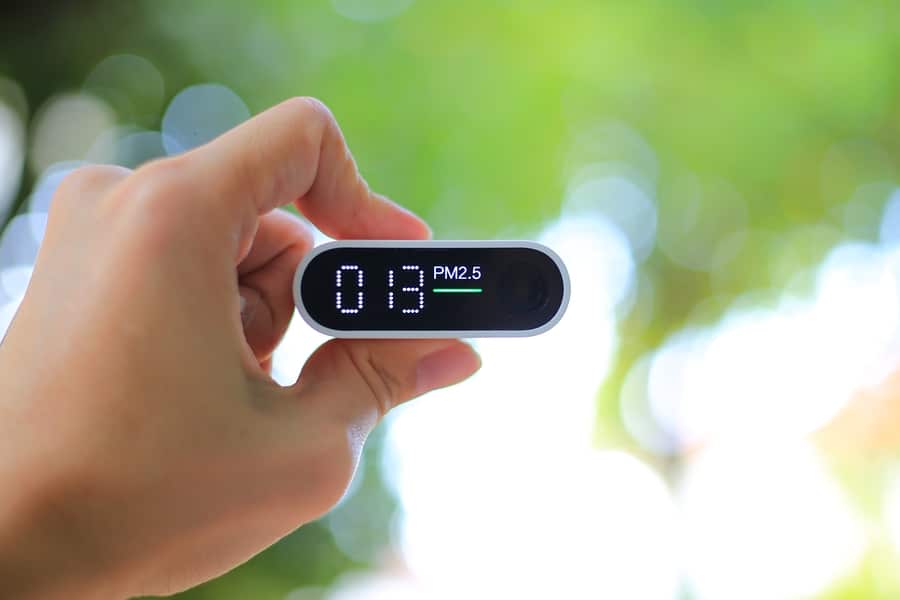
Indoor air pollution is the disruption of indoor air quality that is caused by both internally produced (household) and externally produced (ambient) toxins and irritants. These can be either natural (mold, dander, pollen, radon) or synthetic (chemicals, synthetic fibers).
In the industry, these particles that are suspended in the air are known as “particulate matter” and they are categorized as either PM₁₀ or PM₂.₅. The designation PM₁₀ reflects particles that are 10 micrometers and smaller, such as dust, pollen, or mold. This is about ⅕ the diameter of a human hair or less! PM₂.₅ particles are 2.5 micrometers and smaller – one-quarter the size of the PM₁₀ particles. These include organic compounds and metals.

Another form of indoor air pollution is gaseous pollution, such as radon, carbon monoxide, volatile organic compounds (VOCs) from paints and varnishes, off-gassing from carpets, cleaning products, and other chemicals. Smoke can fall under both the “particulate matter” pollution and “gaseous” pollution categories.
The ways indoor air pollution/particulate matter is measured include measuring concentration (gravimetric, optical, and microbalance) or measuring size distribution by using a Scanning Mobility Particle Sizer (SMPS), an Electrical Low Pressure Impactor (ELPI), or other methods.
Different pollutants require different testing devices. Testing radon requires its own device and is a must, as it’s a colorless, odorless, radioactive gas that can be deadly. Carbon monoxide detection (using another device) is also a requirement for safety.
There are a number of different indoor air quality detectors out there that measure a select variety of particulate matter and gaseous air pollutants, including PM10, PM2.5, VOCs, CO2, and carbon monoxide. Some may additionally measure temperature, humidity, and barometric pressure. Apparently, you can build your own particulate matter detector if you’re looking for a project.
Why is all of this important? According a 2018 article published in the Lancet:
“Air pollution is recognised as a global public health issue: the Global Burden of Diseases, Injuries, and Risk Factors (GBD) Study reported that air pollution alone was responsible for 6.7 million deaths globally in 2016. Furthermore, the number of deaths is expected to more than double by 2050 if no action is taken.”
The Environmental Protection Agency (EPA) states that indoor air is often 2 to 5 times more polluted than outdoor air, and it can be up to 100 times more polluted. Where do we spend most of our time? Americans, at least, spend around 90% of each day indoors.
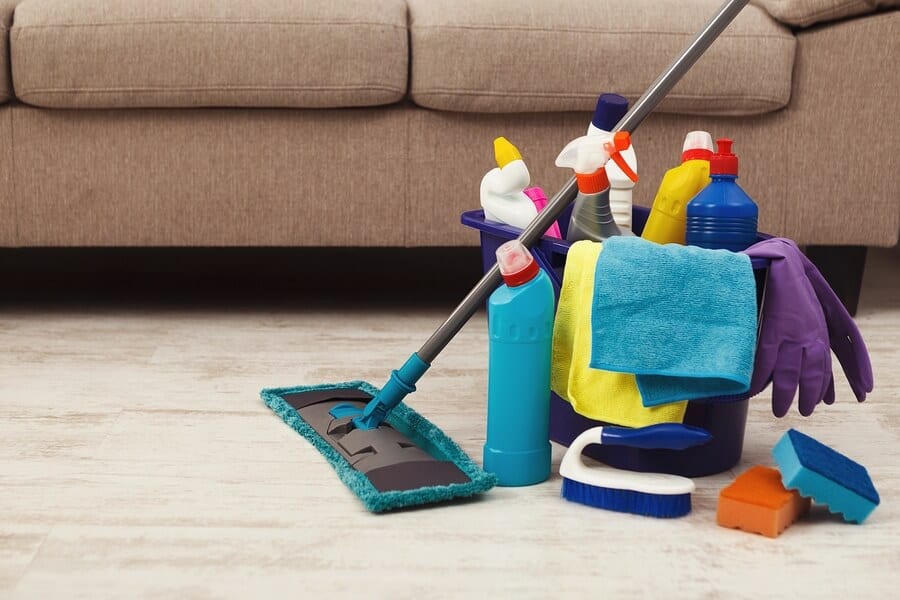
What causes indoor air pollution?
Indoor air pollution is caused by either household contaminants or ambient/outdoor contaminants. Ambient air pollution comes in through open windows or doors. So, while opening up windows and doors can potentially let some fresh air in and some household pollutants out… ambient pollutants may come in to replace the ones lost.
Some common household sources of indoor air pollution include:
- Household cleaning products (chlorine bleach, laundry detergent, dryer sheets, cleaning sprays and polishes)
- *Here’s a DIY alternative
- Personal care products (hair spray, perfume, nail polish, makeup)
- Volatile Organic Compounds (VOCs) from building materials, paint, upholstered furniture, and mattresses!
- Lead and asbestos
- Radon emissions (including from granite countertops)
- Plastics of all kinds – containing xenoestrogens
- Microbes (bacteria, viruses, mold spores)
- Dust mites
- Smoke and soot from wood fired stoves
- Cigarette/tobacco smoke
- Scented candles, air fresheners, and potpourri
- Insecticides for ants, roaches, etc
- Toxic cookware
- Dry cleaning chemicals
Some common ambient sources of indoor air pollution include:
- Dirt (including brought in on your shoes and naturally produced radon from uranium)
- Pollen
- Microbes (bacteria, viruses, mold)
- Smoke and soot (even from wildfires)
- Dust (made up of fur/hair, skin of insects and rodents, excrements, et cetera)
- Volatile chemicals in the water supply
- Traffic-related pollution – especially if you live near a freeway
The journal, Environmental Science & Technology, published a report that analyzed the components of household dust. It was discovered to be largely made up of dead skin, fiber from carpet and furniture, dirt, and airborne particles. Over 60 percent of dust comes in from outside.
What health conditions are linked to indoor air pollution?

Air pollution, whether it’s indoors or outdoors, affects the immune system. When particles are inhaled, the body gets to work fending off potential poisons and irritants and produces an immune (and inflammatory) reaction.
When the immune system gets activated, so does the endocrine system – your hormones. In fact, studies have linked some particulate matter exposure (nitrates) to HPA axis activation. This is your stress response system: the Hypothalamic-Pituitary-Adrenal axis. We already know stress is a problem for hormone balancing.
Indoor air pollution has also been linked to:
- Autoimmune disease
- Cancer (lung cancer, breast cancer, and others)
- Respiratory diseases (including asthma)
- Cardiovascular disease (including high blood pressure)
- Neurological problems – including an increased risk of Alzheimer’s in children!
- Type 2 Diabetes
- Organ damage (kidneys, liver)
- Birth defects
- Accelerated aging (due in part to decreased collagen production) and shortened lifespan
In summary, indoor air pollution contributes to chronic inflammation, hormone imbalance, blood sugar problems (think: weight gain), autoimmune disease, breast cancer, aging, and more.
But, all is not lost. The key is reducing indoor air pollution in whatever ways possible. That may even include bringing in some air cleansing plants, such as a spider plant, Boston fern, ficus tree, or a peace lily to green up your space and purify the air.
However, if you really want to make an impact on your health, I’d highly recommend a good quality air filter.
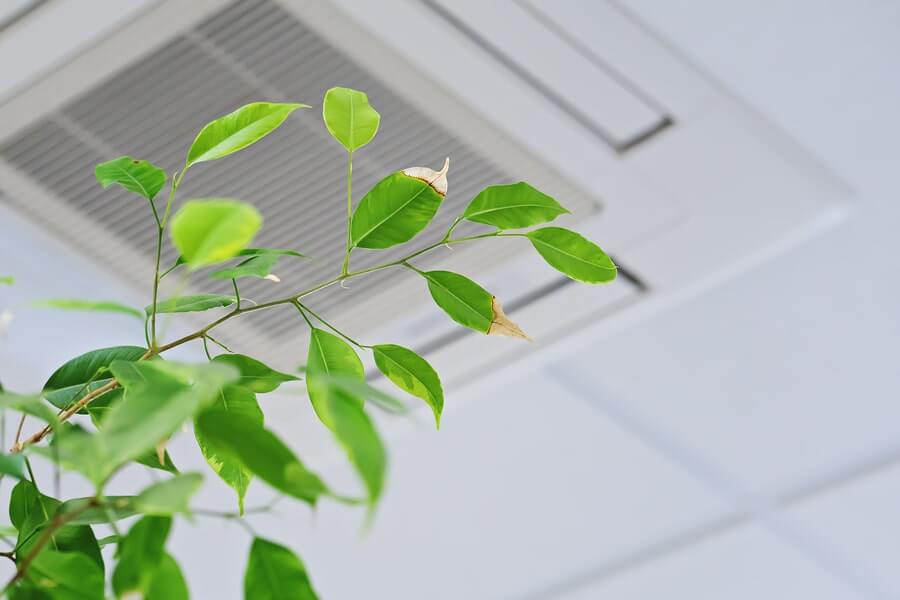
Types of air filters on the market
When it comes to keeping your indoor air clean, there are a number of options on the market, but they pretty much fit into two main categories: Central heating, ventilation, and air-conditioning (HVAC) filters or portable air filters/purifiers.
Central filtration (HVAC filter) is professionally installed and cleans the air as it enters into your home through your heating or cooling system. Portable air purifiers are small units designed for individual rooms. Units with fans tend to be more effective, but they can be a bit noisy.
What to look for in a good air filter
There are three main things to look for when searching for a good home air filter.
The first thing to seek out is an Ultra HEPA Filter. A regular HEPA filter traps 99.97% of particles as small as 0.3 microns (smoke is 0.1 to 1 microns). That’s pretty good. However, an Ultra HEPA filter goes beyond that to capture 100% of particles down to .003 microns. That’s 100x SMALLER than a regular HEPA!
Second, look for an Activated Carbon Filter. This filter will address all chemical/gas contaminants, including those VOCs outgassing from your carpet or paint that can destroy your health.
Third, look for a High CADR rating. This rating, which stands for Clean Air Delivery Rate, indicates how fast the air purifier cleans the air in cubic feet per minute for a specified room size. You want a high rating so that the purifier will clean the largest area of your home as quickly as possible.
What I picked for my house: AIR Doctor
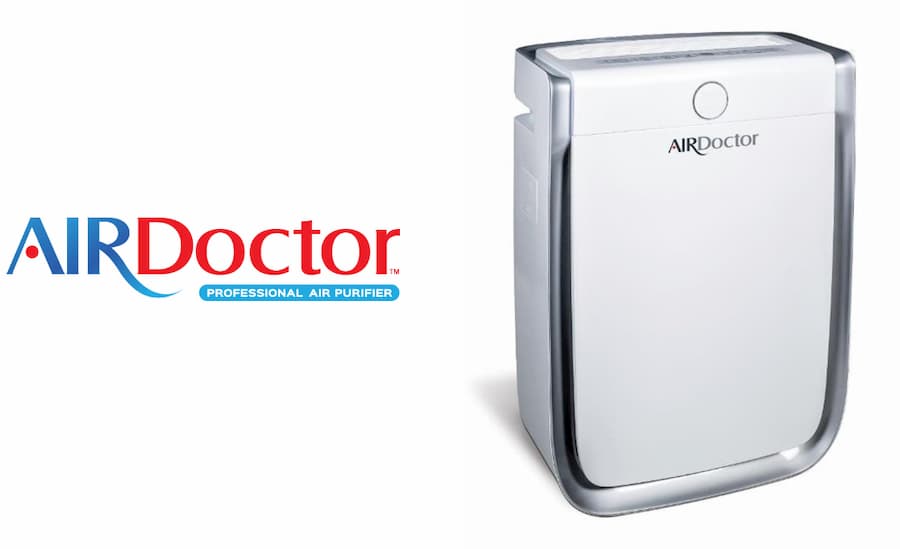
AIR Doctor is a top of the line air filter that boasts all three of the above qualifications: an Ultra HEPA Filter, an Activated Carbon Filter, and a High CADR of 326 for smoke, 343 for dust, and 373 for pollen. It cleans a 450 square foot room 6 times an hour and a 900 square foot room 3 times an hour.
The Ultra HEPA filter removes things like pet dander, mold, pollen, dust mite debris, smoke, bacteria, and viruses, while the Activated Carbon filter removes ozone, formaldehyde, VOCs, and other dangerous gasses. The high CADR ensures quick removal of smoke, dust, and pollen.
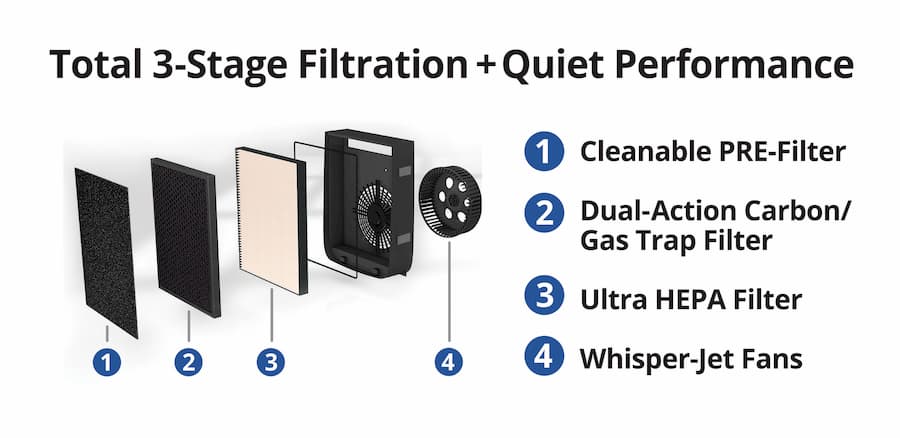
AIR Doctor is a 100% sealed system. No air passes through AIR Doctor that misses the filter. This system is completely sealed to ensure all the air you breathe is pure and filtered.
How does the AIR Doctor compare to other air purifiers?
So, how does AIR Doctor stack up against the competition? Not only is it extremely effective, it’s also very affordable:
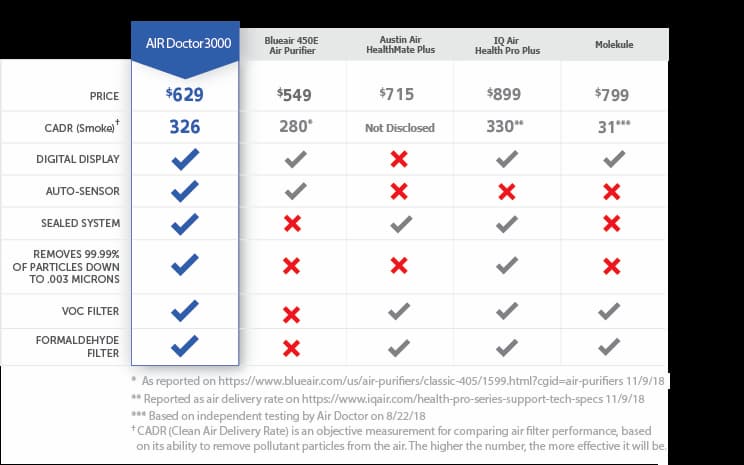
While we already talked about the types of filters and the particulate matter it removes from the air, the product is also very straightforward and easy to use.
AIR Doctor has an “Auto-Mode” that uses a professional-grade air quality sensor to check your the status of the air and immediately adjust its filtration strength. It’s great, because you don’t have to constantly monitor it. RED indicates poor air quality, which means the fan is on High speed. ORANGE indicates moderate air quality, so the fan backs down to Medium. BLUE indicates good air quality, so the fan stays on a steady Low. The AIR Doctor knows what to do.
Worried about all those lights disturbing your circadian rhythm and keeping you up at night? AIR Doctor has a DIM Mode which turns off lights when you’re sleeping.
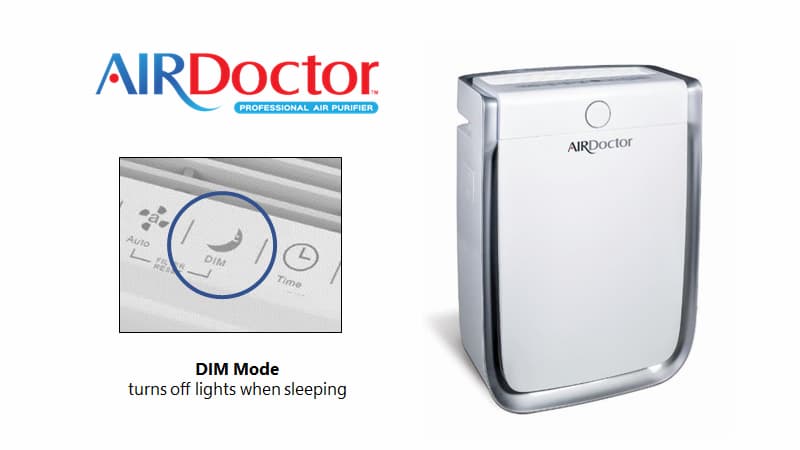
Remember the part about the portable air filters with fans being more effective, but noisy? Not AIR Doctor. It’s very quiet. In fact, the fan and motor it uses is called “Whisper-Jet.” You’ll hardly know it’s there.
As a bonus, AIR Doctor even has an Air Ionizer to remove additional contaminants and odors. And when a new filter is required, an indicator light will go on. No guesswork needed.
Using AIR Doctor at my house
Ever since I got AIR Doctor units (one for the living space and one for my bedroom), I have not been sick once. And not only that, I feel like my energy level has increased as well.
My AIR Doctor kicks in when I cook, start the fireplace or when we have air inversions or suspected pollution from fracking. See the below screenshot showing poor air quality. What, in Boulder, Colorado?!
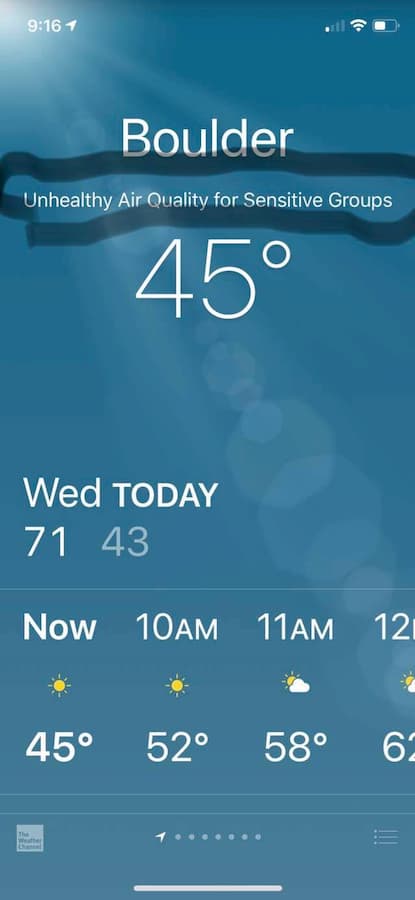
On days like that, my AIR Doctor kicks in automatically (I can’t even feel the air being bad) and the light turns orange – an indication that it’s poor air quality. Within an hour, the air in the house goes back to normal.
This is the Ultra HEPA filter after 6 months of 24/7 use.

After seeing the results, my core team has also purchased a unit of AIR Doctor now.
If you want to try AirDoctor, here is the link.
Resources
https://medlineplus.gov/indoorairpollution.html
https://www.epa.gov/indoor-air-quality-iaq/introduction-indoor-air-quality
https://ourworldindata.org/indoor-air-pollution
https://www.lung.org/our-initiatives/healthy-air/indoor/indoor-air-pollutants/
https://www.atsdr.cdc.gov/csem/csem.asp?csem=33&po=7
https://www.epa.gov/pm-pollution/particulate-matter-pm-basics
https://www.ncbi.nlm.nih.gov/pubmed/27101450
https://www.ncbi.nlm.nih.gov/pubmed/29960262
https://www.who.int/mediacentre/news/releases/2014/air-pollution/en/
https://www.ncbi.nlm.nih.gov/pubmed/19924944
https://www.greenfacts.org/en/particulate-matter-pm/index.htm
http://www.berkeleywellness.com/self-care/over-counter-products/article/air-cleaner-effectiveness
https://www.ncbi.nlm.nih.gov/pmc/articles/PMC4740163/
https://www.epa.gov/radon/health-risk-radon#bier
https://www.ncbi.nlm.nih.gov/books/NBK224477/
https://www.ncbi.nlm.nih.gov/pubmed/29331891
https://www.ncbi.nlm.nih.gov/pmc/articles/PMC5581466/
https://www.ncbi.nlm.nih.gov/pmc/articles/PMC5708213/
https://www.ncbi.nlm.nih.gov/pmc/articles/PMC5893638/
https://www.thelancet.com/journals/laneur/article/PIIS1474-4422(17)30462-3/fulltext
https://www.ncbi.nlm.nih.gov/pmc/articles/PMC3317180/
https://oem.bmj.com/content/64/6/373
https://jasn.asnjournals.org/content/29/1/218.full
https://www.ncbi.nlm.nih.gov/pmc/articles/PMC4112066/
https://www.ncbi.nlm.nih.gov/pmc/articles/PMC6163910/
https://www.ncbi.nlm.nih.gov/pmc/articles/PMC6129826/
https://med.stanford.edu/news/all-news/2013/03/air-pollutants-linked-to-higher-risk-of-birth-defects-researchers-find.html
https://www.epa.gov/indoor-air-quality-iaq/inside-story-guide-indoor-air-quality
Please note that this is a sponsored post, meaning I do receive a small percentage of sales, but all opinions are my own.
Indoor air pollution also causes noncommunicable diseases such as stroke, coronary heart disease, chronic obstructive pulmonary disease and lung cancer. I think it is worth undergoing examinations in specialized clinics in order to prevent the development of the disease in advance.
How long to the filters usually last and how much do they cost to replace?
Hi Sue,
Thank you for your question. I would direct this question to their customer service. That can be found here: https://www.airdoctorpro.com/
Healthy Regards,
HB Team
Thanks! I had an allergy and this post helps me a lot
Indoor air pollution is the disruption of indoor air quality that is caused by both internally produced (household) and externally produced (ambient) toxins and irritants. These can be either natural (mold, dander, pollen, radon) or synthetic (chemicals, synthetic fibers).
Indoor air pollution is the disruption of indoor air quality that is caused by both internally produced (household) and externally produced (ambient) toxins and irritants. These can be either natural (mold, dander, pollen, radon) or synthetic (chemicals, synthetic fibers).